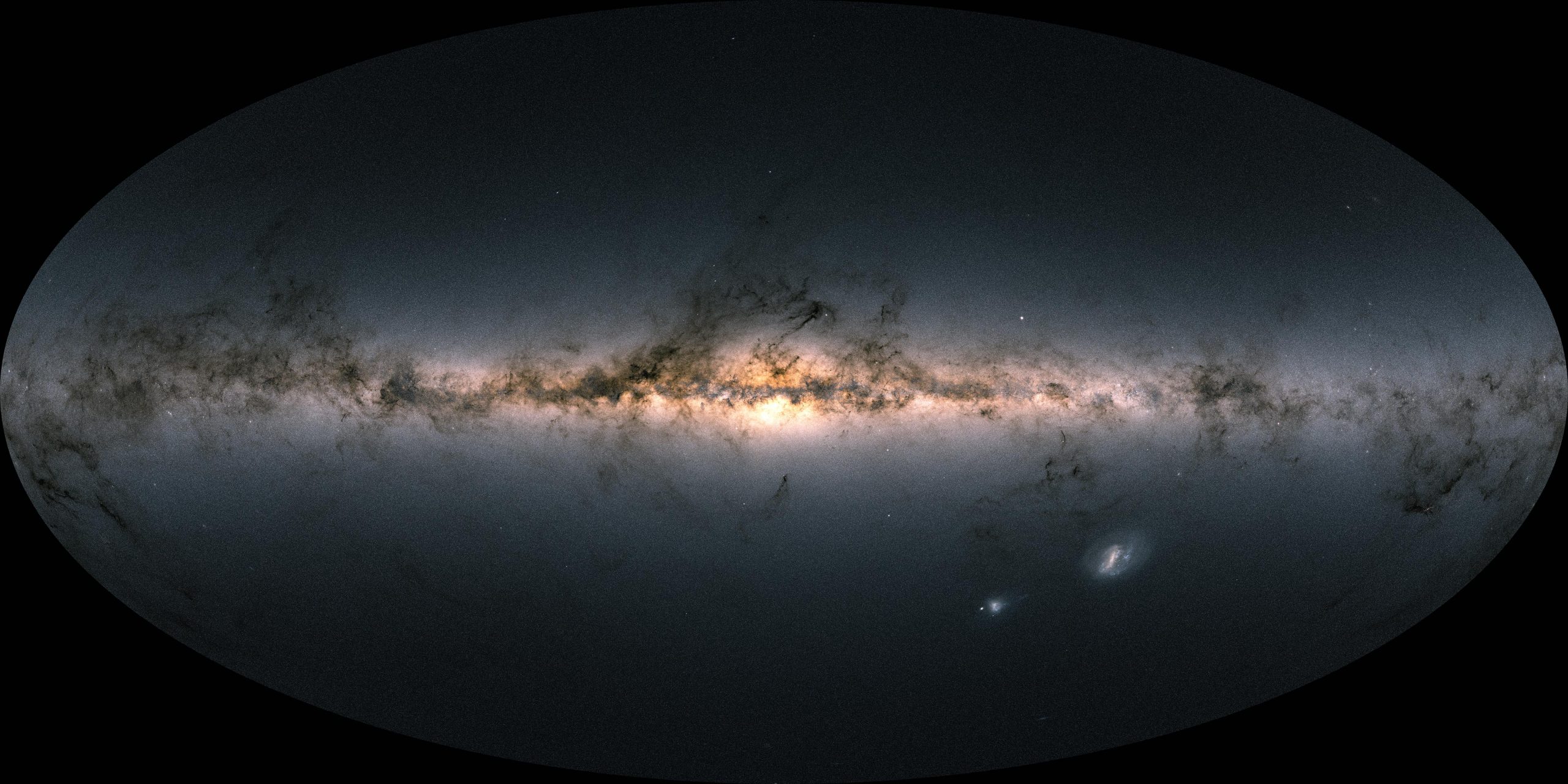
Posted on 03/28/2022 8:15:00 AM PDT by Red Badger

Color of Sky From Gaia's Early Data Release 3
Data from more than 1.8 billion stars have been used to create this map of the entire sky. It shows the total brightness and color of stars observed by ESA’s Gaia satellite and released as part of Gaia’s Early Data Release 3 (Gaia EDR3). Brighter regions represent denser concentrations of bright stars, while darker regions correspond to patches of the sky where fewer and fainter stars are observed. Credit: ESA/Gaia/DPAC; CC BY-SA 3.0 IGO, Acknowledgment: A. Moitinho
======================================================================
Using data from ESA’s Gaia mission, astronomers have shown that a part of the Milky Way known as the ‘thick disc’ began forming 13 billion years ago, around 2 billion years earlier than expected, and just 0.8 billion years after the Big Bang.
This surprising result comes from an analysis performed by Maosheng Xiang and Hans-Walter Rix, from the Max-Planck Institute for Astronomy, Heidelberg, Germany. They took brightness and positional data from Gaia’s Early Data Release 3 (EDR3) dataset and combined it with measurements of the stars’ chemical compositions, as given by data from China’s Large Sky Area Multi-Object Fiber Spectroscopic Telescope (LAMOST) for roughly 250,000 stars to derive their ages.
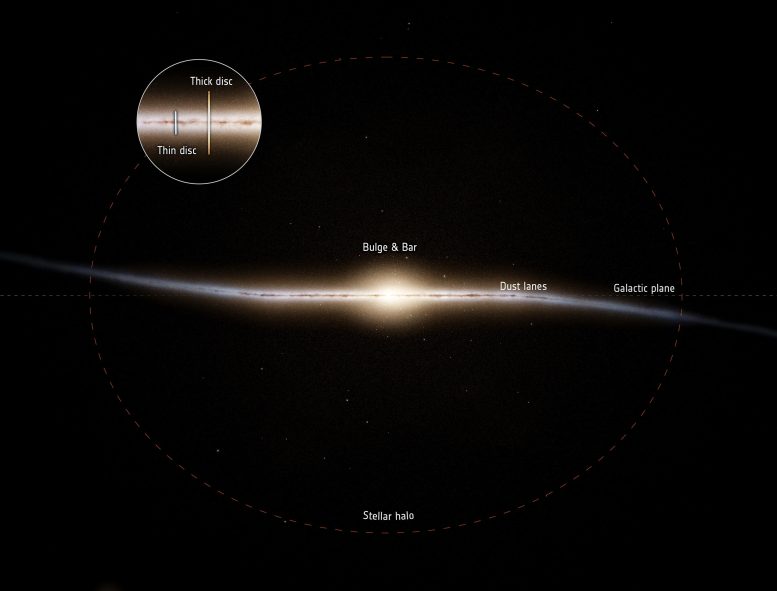
Milky Way Edge-On View Basic structure of our home galaxy, edge-on view. The new results from ESA’s Gaia mission provide for a reconstruction of the history of the Milky Way, in particular of the evolution of the so-called thick disc. Credit: Stefan Payne-Wardenaar / MPIA
=====================================================================================
They chose to look at sub giant stars. In these stars, energy has stopped being generated in the star’s core and has moved into a shell around the core. The star itself is transforming into a red giant star. Because the sub giant phase is a relatively brief evolutionary phase in a star’s life, it permits its age to be determined with great accuracy, but it’s still a tricky calculation.
How old are the stars?
The age of a star is one of the most difficult parameters to determine. It cannot be measured directly but must be inferred by comparing a star’s characteristics with computer models of stellar evolution. The compositional data helps with this. The Universe was born with almost exclusively hydrogen and helium. The other chemical elements, known collectively as metals to astronomers, are made inside stars, and exploded back into space at the end of a star’s life, where they can be incorporated into the next generation of stars. So, older stars have fewer metals and are said to have lower metallicity.
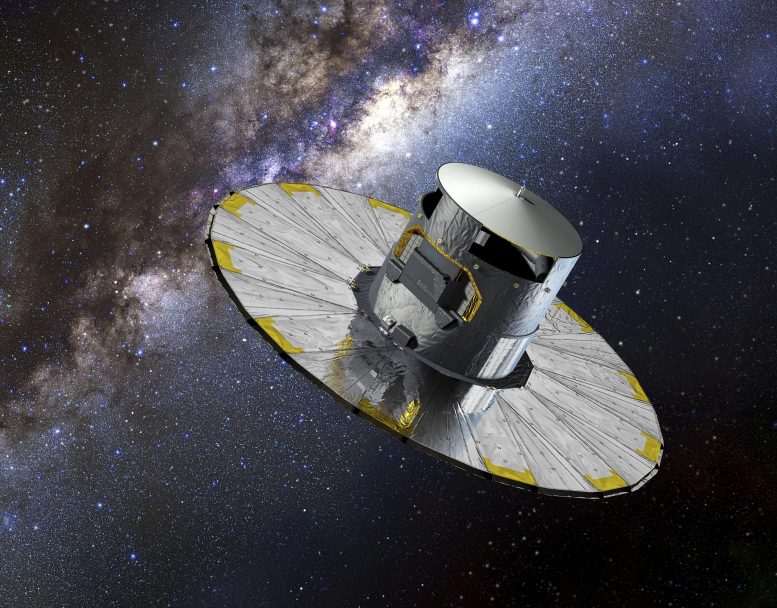
Gaia Spacecraft Artist's Impression
Artist’s impression of the Gaia spacecraft. Credit: ESA–D. Ducros, 2013
=========================================================================================
The LAMOST data gives the metallicity. Together, the brightness and metallicity allow astronomers to extract the star’s age from the computer models. Before Gaia, astronomers were routinely working with uncertainties of 20-40 percent, which could result in the determined ages being imprecise by a billion years or more.
Gaia’s EDR3 data release changes this. “With Gaia’s brightness data, we are able to determine the age of a sub giant star to a few percent,” says Maosheng. Armed with precise ages for a quarter of a million sub giant stars spread throughout the galaxy, Maosheng and Hans-Walter began the analysis.
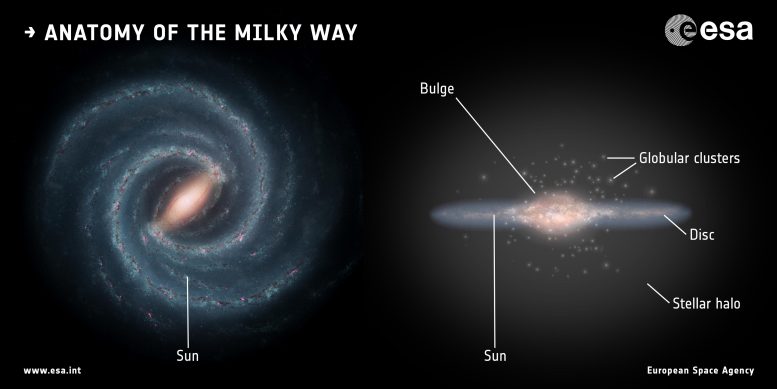
Anatomy of the Milky Way
An artist’s impression of our Milky Way galaxy, a roughly 13 billon-year-old ‘barred spiral galaxy’ that is home to a few hundred billion stars. Credit: Left: NASA/JPL-Caltech; right: ESA; layout: ESA/ATG medialab
======================================================================
Milky Way anatomy
Our galaxy is made of different components. Broadly, these can be split into the halo and the disc. The halo is the spherical region surrounding the disc, and has traditionally been thought to be the oldest component of the galaxy. The disc is composed of two parts: the thin disc and the thick disc. The thin disc contains most of the stars that we see as the misty band of light in the night sky that we call the Milky Way. The thick disc is more than double the height of the thin disc but smaller in radius, containing only a few per cent of the Milky Way’s stars in the solar neighborhood.
By identifying sub giant stars in these different regions, the researchers were able to build a timeline of the Milky Way’s formation – and that’s when they got a surprise.
Two phases in Milky Way history
The stellar ages clearly revealed that the formation of the Milky Way fell into two distinct phases. In the first phase, starting just 0.8 billion years after the Big Bang, the thick disc began forming stars. The inner parts of the halo may also have begun to come together at this stage, but the process rapidly accelerated to completion about two billion years later when a dwarf galaxy known as Gaia-Sausage-Enceladus merged with the Milky Way. It filled the halo with stars and, as clearly revealed by the new work, triggered the nascent thick disc to form the majority of its stars. The thin disc of stars which holds the Sun, was formed during the subsequent, second phase of the galaxy’s formation.
The analysis also shows that after the star-forming burst triggered by the merger with Gaia-Sausage-Enceladus, the thick disc continued to form stars until the gas was used up at around 6 billion years after the Big Bang. During this time, the metallicity of the thick disk grew by more than a factor of 10. But remarkably, the researchers see a very tight stellar age—metallicity relation, which indicates that throughout that period, the gas forming the stars was well-mixed across the whole disk. This implies that the early Milky Way’s disk regions must have been formed from highly turbulent gas that effectively spread the metals far and wide.
A timeline thanks to Gaia
VIDEO AT LINK........................
The earlier formation age of the thick disc points to a different picture of our galaxy’s early history. “Since the discovery of the ancient merger with Gaia-Sausage-Enceladus, in 2018, astronomers have suspected that the Milky Way was already there before the halo formed, but we didn’t have a clear picture of what that Milky Way looked like. Our results provide exquisite details about that part of the Milky Way, such as its birthday, its star-formation rate, and metal enrichment history. Putting together these discoveries using Gaia data is revolutionizing our picture of when and how our galaxy was formed.” says Maosheng.
And we may not yet be looking far enough into the Universe to see similar galactic discs forming. An age of 13 billion years corresponds to a redshift of 7, where redshift is a measure of how far away a celestial object is, and so how long its light has taken to cross space and reach us.
New observations could come in the near future as the James Webb Space Telescope has been optimized to see the earliest Milky Way-like galaxies in the Universe. And on June 13 this year, Gaia will release its full third data release (Gaia DR3). This catalog will include spectra and derived information like ages and metallicity, making studies like Maosheng’s even easier to conduct.
“With each new analysis and data release, Gaia allows us to piece together the history of our galaxy in even more unprecedented detail. With the release of Gaia DR3 in June, astronomers will be able to enrich the story with even more details,” says Timo Prusti, Gaia Project Scientist for ESA.
Reference: “A time-resolved picture of our Milky Way’s early formation history” by Maosheng Xiang and Hans-Walter Rix, 23 March 2022, Nature. DOI: 10.1038/s41586-022-04496-5
Ping!......................
They don’t know what the Milky Way looks like from the outside. No clue.
According to the photo, the European Space Agency is located well outside the galaxy. That’s about right.
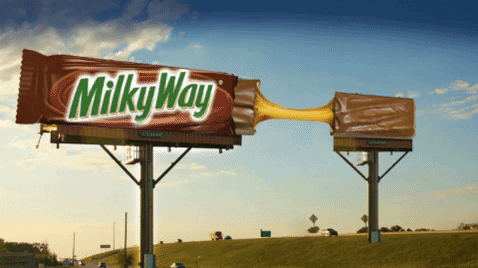
Not sure if I like having sausage in my Milky Way
Joking aside, very interesting
Don’t tell the Big Guy, he loves chocolate pudding.
there is NO FKNG way anyone can tell how old the “Universe” is... and even stating such a thing is nothing but sheer arrogance/ignorance. why are some soo desperate for attention??
not you Red.... the author of this piece...

If you want to have fun with scientists ask them how many universes there are....
It is almost as much fun as asking them how many genders there are....
;-)
I don't know. Have you ever had bacon chocolate chip cookies? Pretty good.
I thought it was pretty well known that galaxies are pulled apart, merge, get reformed as other galaxies. I wouldn't be surprised if the Milky Way had some old, left-overs in it.
Yes, chocolate turns white when it gets exposed to moist heat..........
Yes, chocolate turns white when it gets exposed to moist heat..........
Yes, chocolate turns white when it gets exposed to moist heat..........
So it looks like our galaxy is a barred spiral? Not as pretty as Andromeda. Although I had a 63 Galaxy 500 with a 390. It was cool and a huge back seat to fit some heavenly bodies at the drive in.
Mars bar was cancelled in America but exists in Canada and the UK
I ordered some on line and learned that the current alien Mars bars are closer to the American Milkey Way than the classic American Mars candy bar.
This difference may account for the speculative age of the galaxy
Since the Milky Way galaxy has been accreting for untold ages and is in fact still in a formative accretive state, it cannot actually be given an age.
Milk is racist.
“...there is NO FKNG way anyone can tell how old the “Universe” is...”
No big deal. Closer to home I’ve seen women in bars in Seattle that you could say the same about.
wy69
So, old enough to drink, then? When it collides with Andromeda, they can have a toast.
lol
Disclaimer: Opinions posted on Free Republic are those of the individual posters and do not necessarily represent the opinion of Free Republic or its management. All materials posted herein are protected by copyright law and the exemption for fair use of copyrighted works.